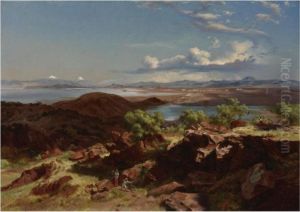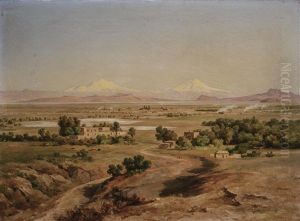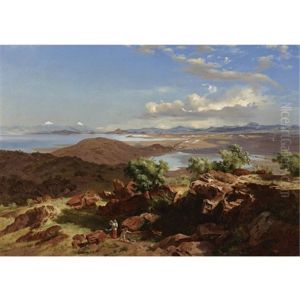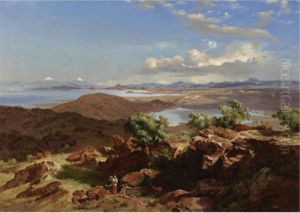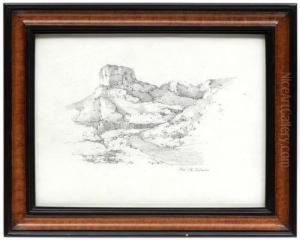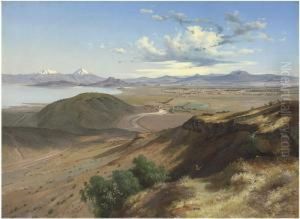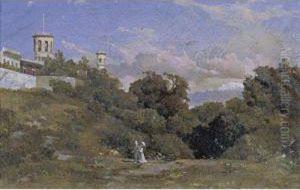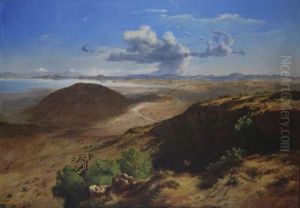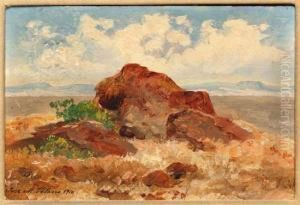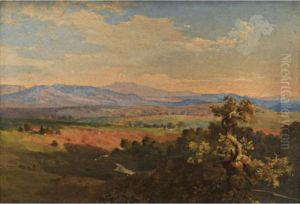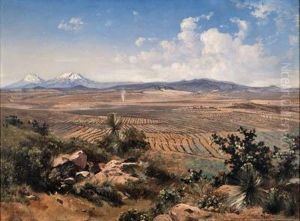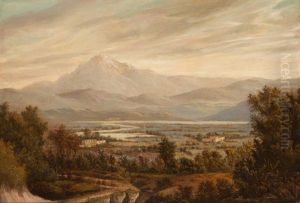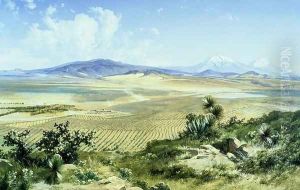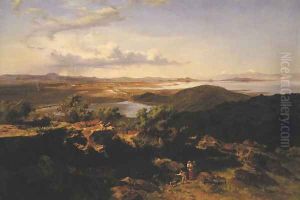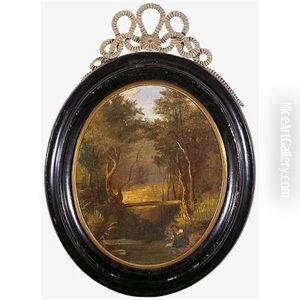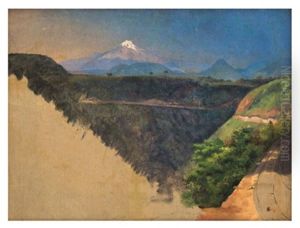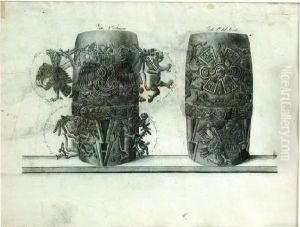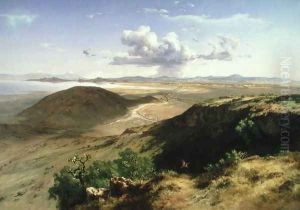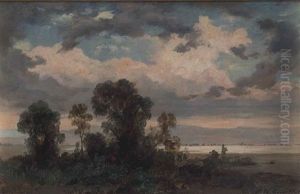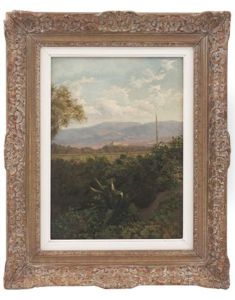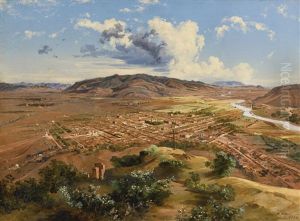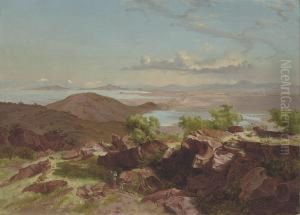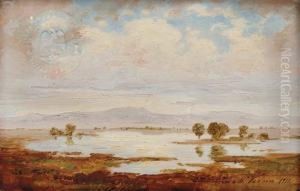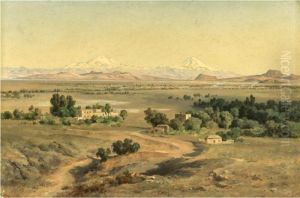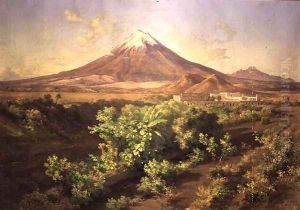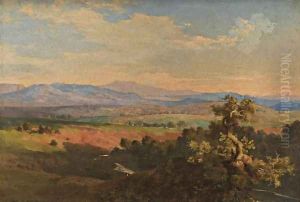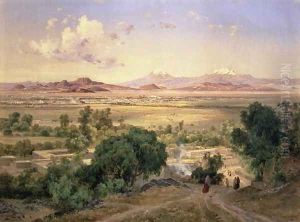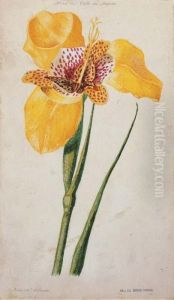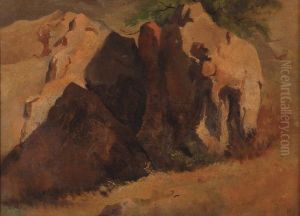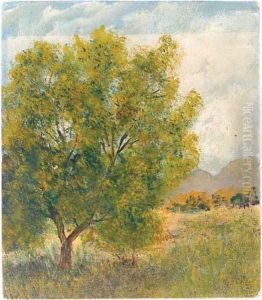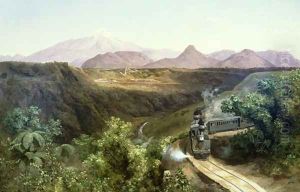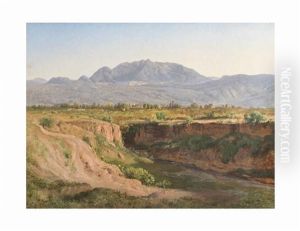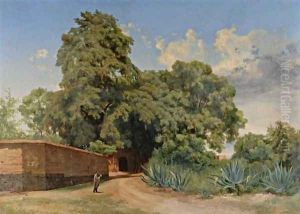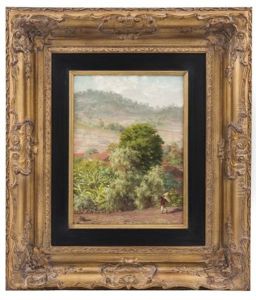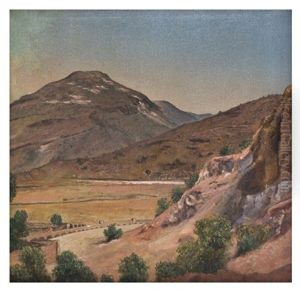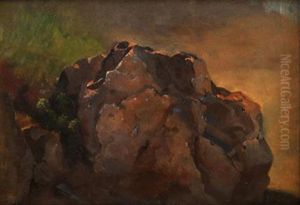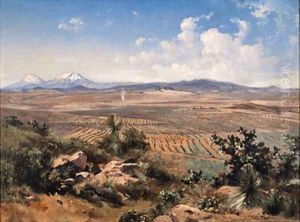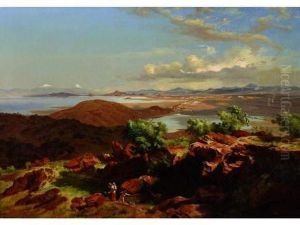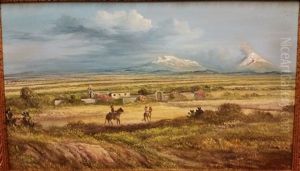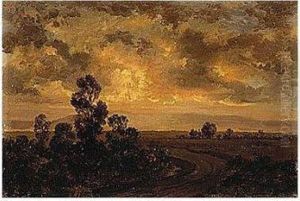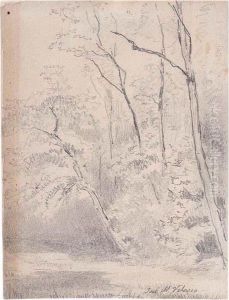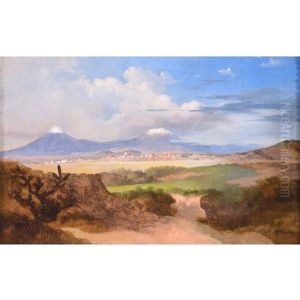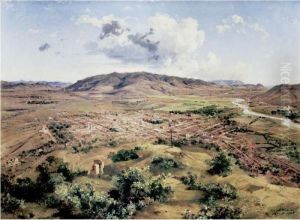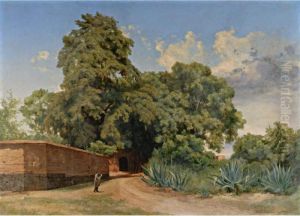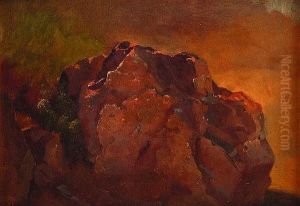Jose Maria Velasco Paintings
José María Velasco was a prominent 19th-century Mexican landscape painter, renowned for his detailed and picturesque landscapes of Mexico's topography, its valleys, and its volcanoes. His work is considered a fusion of romanticism and realism, capturing the natural beauty of the Mexican landscape in a period of significant change and modernization. Born on July 6, 1840, in Temascalcingo, Velasco showed an early interest in art and attended the San Carlos Academy of Fine Arts in Mexico City, where he studied under the Italian painter Eugenio Landesio, who was a significant influence on his technique and style.
Velasco's career spanned several decades during which his reputation grew, both in Mexico and internationally. His landscapes often depicted the Valley of Mexico, showcasing his meticulous attention to detail and his ability to render the majestic expanses with scientific accuracy and artistic beauty. This was part of a broader 19th-century interest in the natural world which in Mexico was particularly linked to the nation's search for identity following independence from Spain.
His works were exhibited in various international expositions, where he received numerous awards. Velasco also became a teacher at the San Carlos Academy, influencing a new generation of Mexican artists. Despite his success abroad, Velasco's work was sometimes met with a lukewarm reception at home, where the political and cultural climate was shifting towards an emphasis on post-revolutionary identity and muralism, which often focused on social themes rather than landscape.
Velasco's legacy is significant in Mexican art history. He documented the natural environment of Mexico at a time when the country was undergoing rapid transformation. His paintings are now considered national treasures and are held in high esteem for their contribution to the cultural and historical record of Mexico's landscape. José María Velasco passed away on August 26, 1912, in Mexico City, leaving behind a body of work that continues to be celebrated for its beauty and historical value.
